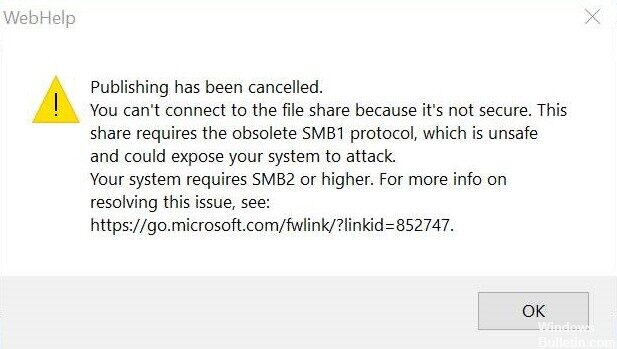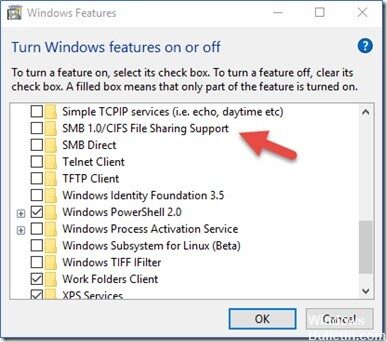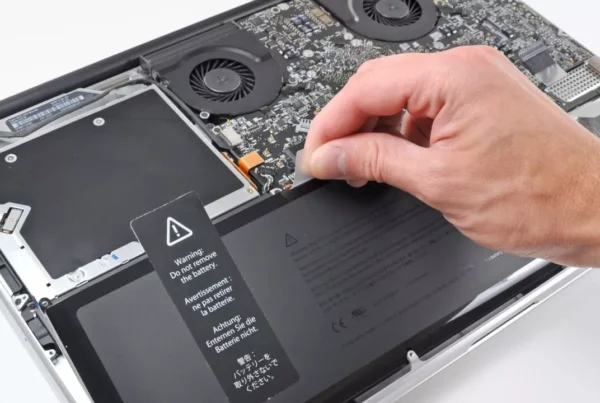RECOMMENDED: Click here to fix Windows errors and get the most out of your system performance
Since the SMBv1 protocol is now disabled by default in Windows 10, programs and apps that depend on it would run into issues. If you try to allocate the network share to such an application, you may get the error:
You can't connect to the file share because it's not secure. This share requires the outdated SMB1 protocol, which is not secure and could expose your system to attack.
Cause of this error
The problem is caused by changes in the Windows operating system. In Windows 10 Fall Creators Update and Windows Server, version 1709 (RS3) and later, the Server Message Block version 1 (SMBv1) network protocol is no longer installed by default. It has been superseded by SMBv2 and later.
If your network share requires the SMBv1 protocol, the connection fails because Windows operating systems no longer include the default SMBv1 client or server.
Enabling the SMBv1 protocol
The SMBv1 protocol is a very deprecated protocol. It is well known that it enables many ransom demands on the system. After the Wannacry ransomware attack, users were encouraged to disable the SMB1 protocol on their system. When several of these attacks were repeated, Microsoft summarily disabled the SMBv1 protocol by default on all systems.
So if you are using a system running Windows 10 v1709 or later, or if you have disabled SMBv1, you will get this error. Obviously, the answer to this problem is to enable the SMBv1 protocol, but you must understand the risk involved. A good suggestion would be to temporarily enable the protocol and disable it once the job is done.
It is feasible to enable the SMBv1 protocol by performing the following steps:
- Open the control panel.
- Click on the Programs tab.
- Click Turn Windows features on or off.
- Expand the SMB 1.0 / CIFS file sharing support option.
- Enable the SMB 1.0 / CIFS Client option.
- Click on the OK button.
- Click the Restart Now button.
If you connect Windows 10 to Windows server and this issue occurs, you need to disable SMBv1 on Windows server first. Next, make sure that all clients connected to Windows Server support SMBv2. After clients support SMBv2, you can upgrade Windows Server to fix this issue.
We think something from above should help you.
https://community.adobe.com/t5/robohelp/your-system-requires-smb2-or-higher/td-p/10454158
RECOMMENDED: Click here to fix Windows errors and get the most out of your system performance







